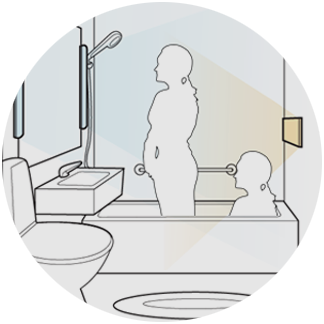Jeongmin Lee and Kyungah Choi published a research paper entitled “Empirical Evaluation of User-Centered LED Lighting in Residential Bathrooms” in the Korean Journal of Science of Emotion & Sensibility. This study investigates how people have responded to the different quality of LED lighting in context of residential bathroom and therey provides the empirical results to serve different anticipations of users. This study was supported by the IT R&D program of KEIT funded by the Ministry of Knowledge and Economy.
Abstract
This user-centered research aims to empirically evaluate color temperature (K) and illuminance (lx) of residential bathroom lightings to determine the most optimal lighting conditions for productive task performance as well as for satisfying users’ emotional needs. Using 3 LED lighting fixtures, 4 types of lighting contexts were investigated; main lighting, task lighting, shower lighting, and bath lighting. Two lightings were installed parallel to the vertical edges of the main bathroom mirror to be used as main and task lighting, while another fixture was installed above the bathtub to be used for shower and bathing. For each lighting context, subjects (N=54) were instructed to perform a few tasks during which time the users were exposed to different lighting conditions with color temperature ranging from 2700K ~ 6500K and illuminance ranging from 100lx ~ 700lx. Upon completing the given tasks, subjects were asked to evaluate the lighting conditions and their pertinence for performing the given tasks. Based on the user evaluations, the most optimal lighting conditions for the different lighting scenarios are as follow: 1) 3500K~4300K and 150 lx for main lighting, 2) 3500K~4300K and 500lx ~ 700lx for task lighting, and 3) 2700K~3500K and 100lx ~ 150lx for shower/bath lighting. These results can be used to adjust the lighting standards suggested by KS, as well as be utilized by both engineers and designers in designing new types of user-centered bathroom lightings.
Full text in the Korean Journal of Science of Emotion and Sensitivity


